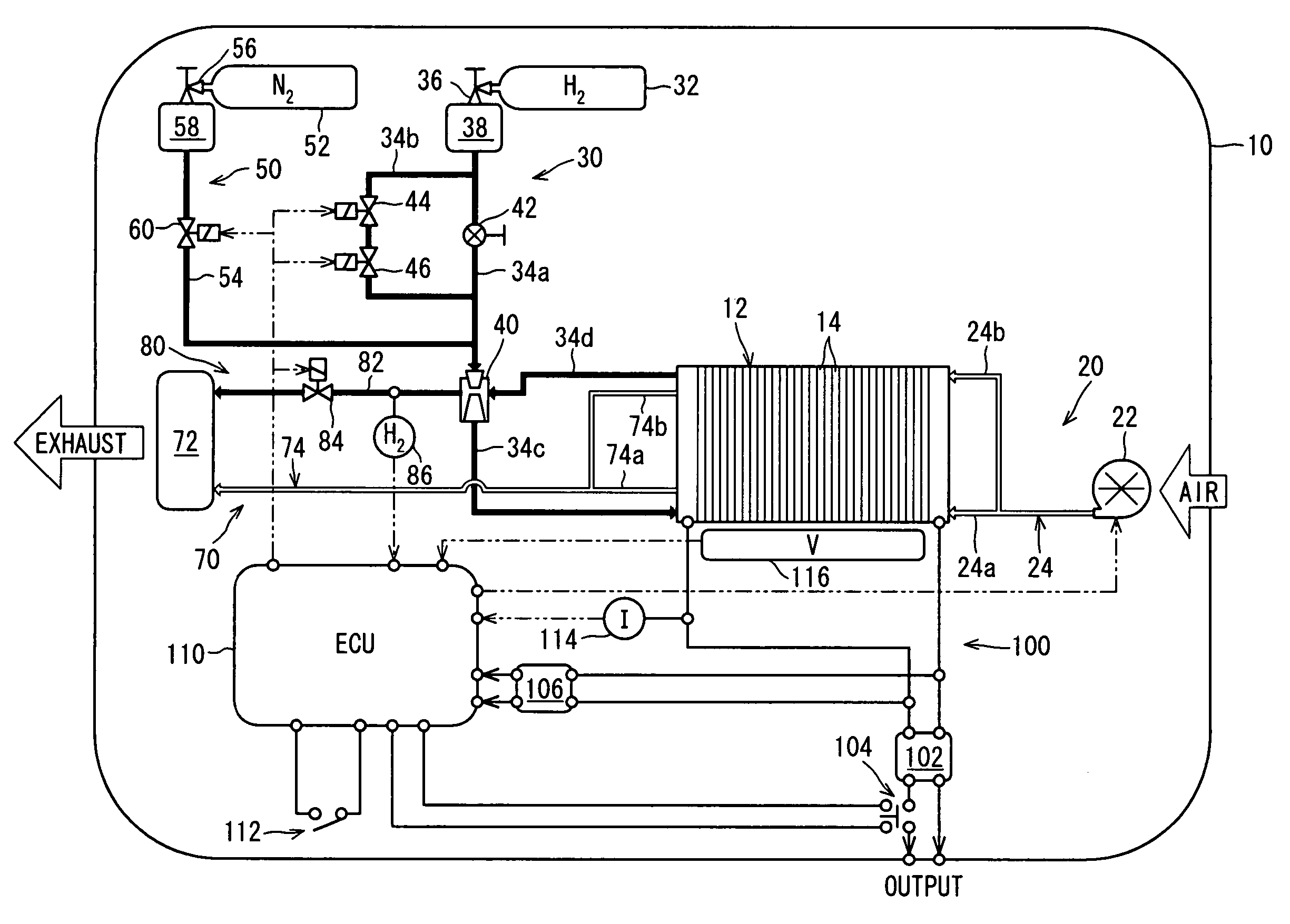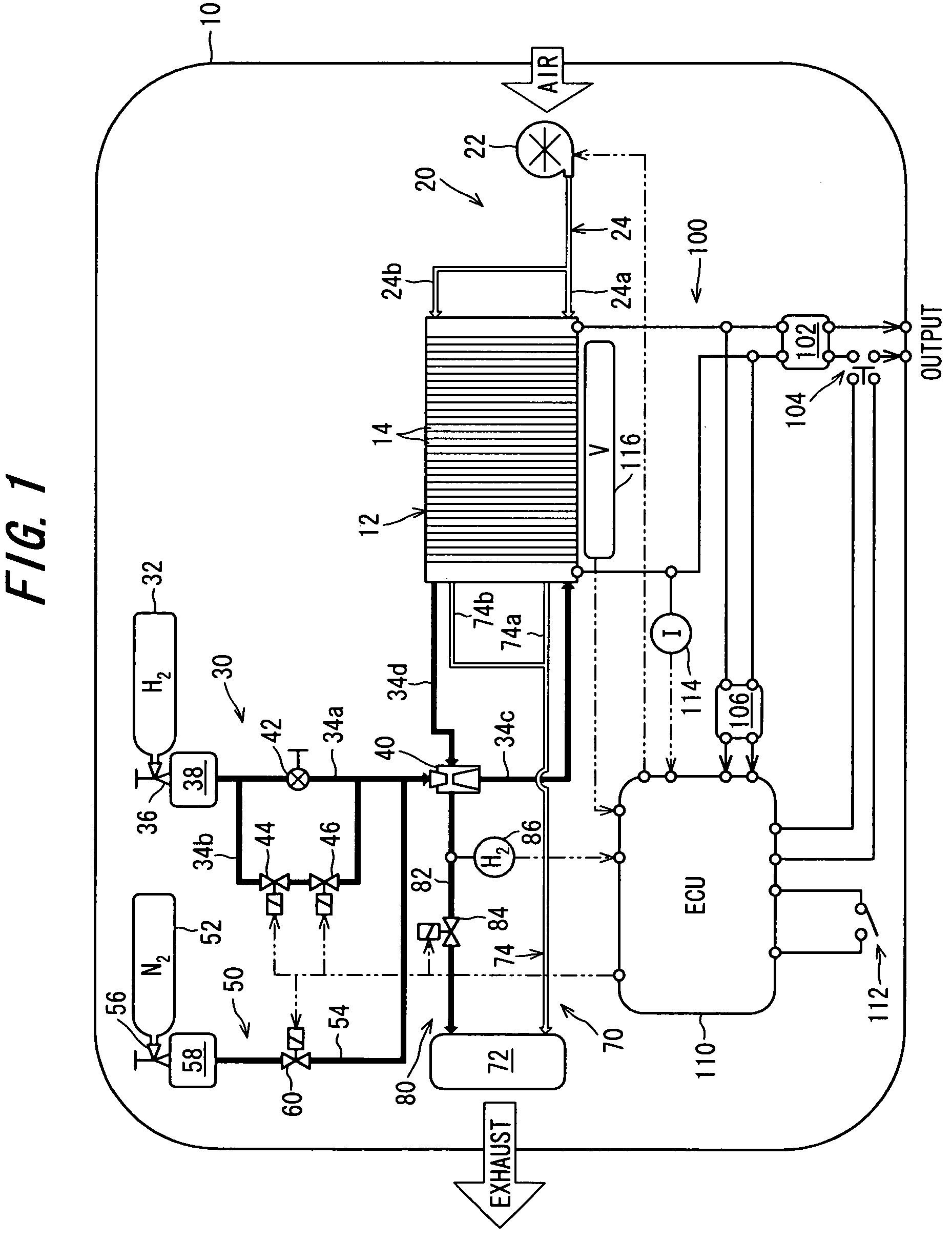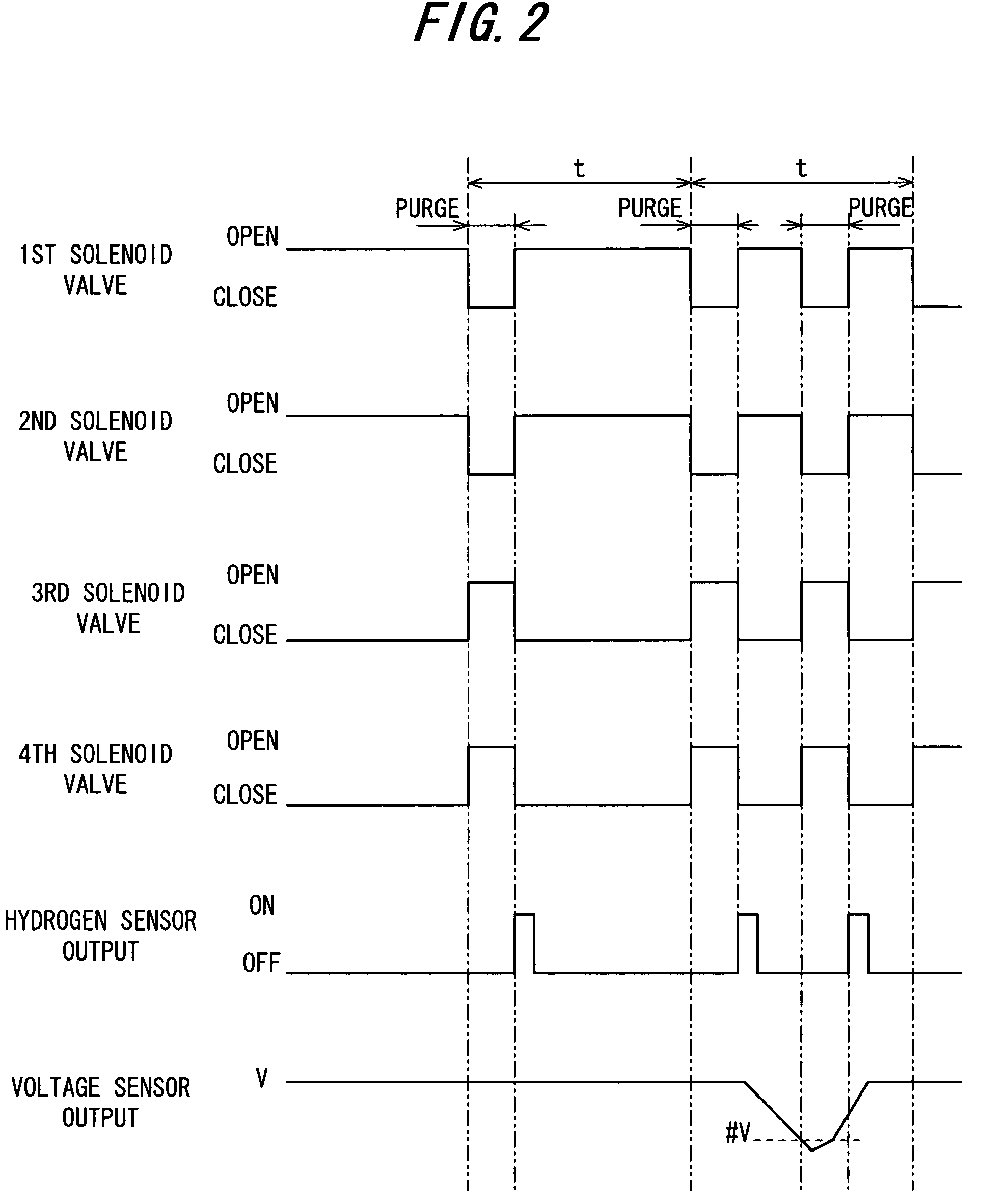Fuel-cell system
a fuel cell and system technology, applied in the field of fuel cell systems, can solve the problems of low power generation ability, inability to perform purging at the optimal time point, accumulation of retained nonreactant gas and/or generated water, etc., to prevent the accumulation of nonreactant gas and prevent repeated purging. unnecessary
- Summary
- Abstract
- Description
- Claims
- Application Information
AI Technical Summary
Benefits of technology
Problems solved by technology
Method used
Image
Examples
first embodiment
[0025]FIG. 1 is a schematic diagram showing the configuration of a fuel-cell system according to the invention.
[0026]Reference numeral 10 in FIG. 1 designates a fuel-cell system equipped according to the first embodiment. The fuel-cell system 10 is configured as a package of portable size including a fuel battery 12, piping / tubing and other components required for power generation.
[0027]The fuel battery 12 is made up of multiple, typically 70, individual fuel cells (electrochemical cells) 14 installed adjacent to one another and connected in series to have a rated power 1.05 kW. The individual cells 14 are polymer electrolyte fuel cells composed of an electrolytic membrane (solid polymer membrane) that is sandwiched by an air (oxygen) electrode (cathode) and a fuel electrode (anode), and separator plates located outside the respective electrodes. This is a conventional configuration and will not be explained in detail here. Thus, the fuel battery 12 comprises more than one fuel cell...
second embodiment
[0059]A fuel-cell system according to this invention will now be explained with reference to FIGS. 4 and 5.
[0060]FIG. 4 is a view, similar to FIG. 1, but showing the configuration of a fuel-cell system according to the second embodiment of this invention.
[0061]The explanation of the second embodiment will focus on the points of difference from the first embodiment. In the second embodiment, the system configuration is simplified by eliminating the nitrogen gas supply system. The purge gas discharge system 80 has a second purged gas discharge passage (residue discharge passage) 82b that bypasses the forth solenoid valve 84 and a second manual (manually operated) valve 88 is installed in the second purged gas discharge passage 82b.
[0062]The second embodiment aims to achieve the aforesaid second object. Specifically, as discussed above, when the operation of a fuel-cell system is terminated, nitrogen and other nonreactant gases may be retained in the fuel electrode owing to air flowin...
third embodiment
[0075]A fuel-cell system according to this invention will now be explained with reference to FIG. 6.
[0076]FIG. 6 is a view, similar to FIG. 4, but showing the configuration of a fuel-cell system according to the third embodiment of the invention.
[0077]The explanation of the third embodiment will focus on the points of difference from the second embodiment.
[0078]In the fuel-cell system according to the third embodiment, the first manual valve 42 and second manual valve 88 are provided with a coupler 200 that couples the first and second manual valves 42 and 88 for enabling ganged operation of these two valves. More specifically, the coupler 200 couples the first and second manual valves 42 and 48 such that they are opened or closed together. Both the first manual valve 42 and the second manual valve 88 can therefore be simultaneously opened and closed by operating the coupler 200. This enables the supply of hydrogen gas and the discharge of residue to be conducted by a single operati...
PUM
| Property | Measurement | Unit |
|---|---|---|
| rated power | aaaaa | aaaaa |
| chemical energy | aaaaa | aaaaa |
| current | aaaaa | aaaaa |
Abstract
Description
Claims
Application Information
 Login to View More
Login to View More - R&D
- Intellectual Property
- Life Sciences
- Materials
- Tech Scout
- Unparalleled Data Quality
- Higher Quality Content
- 60% Fewer Hallucinations
Browse by: Latest US Patents, China's latest patents, Technical Efficacy Thesaurus, Application Domain, Technology Topic, Popular Technical Reports.
© 2025 PatSnap. All rights reserved.Legal|Privacy policy|Modern Slavery Act Transparency Statement|Sitemap|About US| Contact US: help@patsnap.com



